Ahead of the 50th anniversary of the Apollo moon landings, we look at the innovative training and exercises that put the astronauts through their paces in preparation for their iconic mission.
Reduced Gravity Walking Simulator - Lunar Landing Research Facility, Virginia
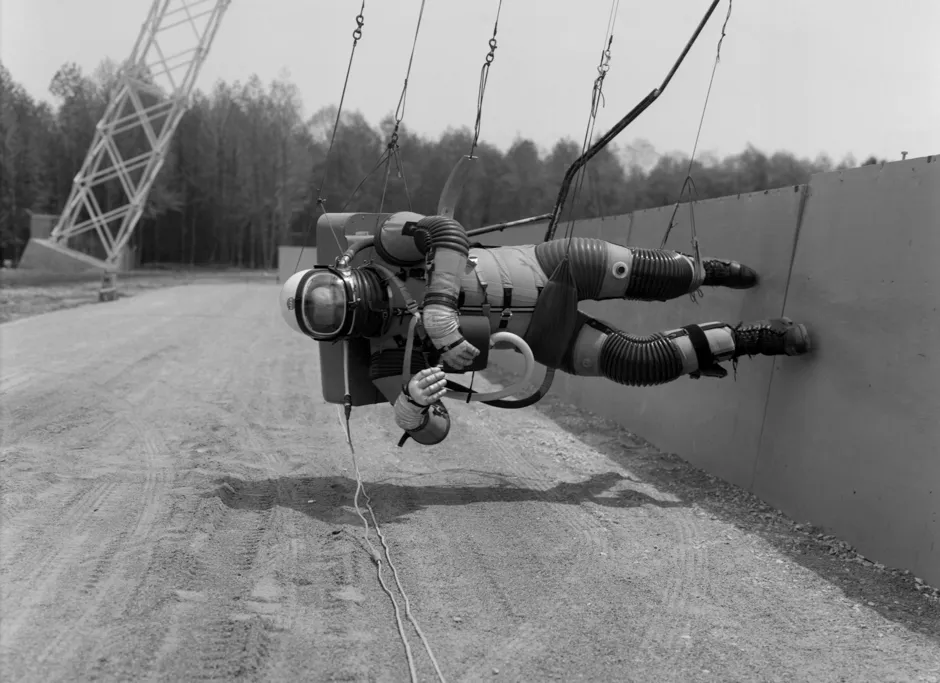
Astronauts on the Moon would be working in reduced gravity – about one-sixth of what we feel on Earth. One way that NASA tried to replicate this experience was with this Reduced Gravity Walking Simulator. The puppetry-like suspension system kept astronauts in a horizontal position at the bottom of a long pendulum, which was designed so that the near-vertical ‘floor’ supported one-sixth of their weight.
As the astronauts walked, jumped and ran, researchers could study factors such as their speed, energy use and fatigue levels. The test subject here is working in a near-complete spacesuit so that engineers could learn more about the challenges of moonwalking with constrained movement, which helped them design suits that prevented astronauts from overheating on the Moon.
Discover how the Apollo missions came to pass:
- The Space Race: how Cold War tensions put a rocket under the quest for the Moon
- “We choose to go to the Moon”: Read JFK’s Moon speech in full
- In pictures: USA vs USSR - the race to the Moon
- Ye final frontier: the 17th-century space race [via History Extra]
Mock lunar surface - Manned Spacecraft Center (now the Johnson Space Center), Houston, Texas
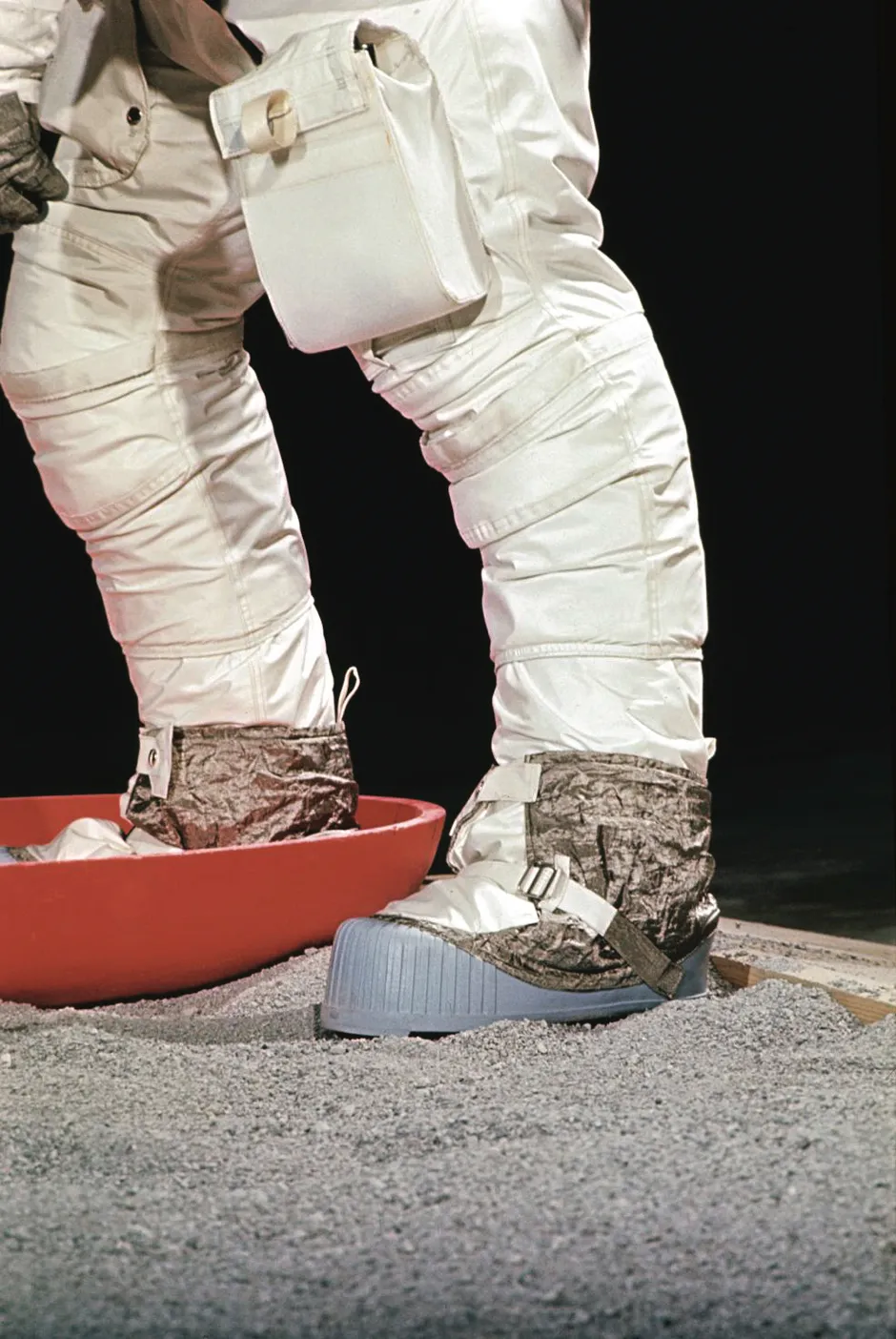
Neil Armstrong and Buzz Aldrin would spend about two-and-a-half hours on the lunar surface during their Apollo 11 moonwalk, every minute of which was meticulously planned. In April 1969 – three months before their trip to the Moon – the astronauts donned their heavy spacesuits and carried out a dress rehearsal.
On a mock lunar surface, they planted the American flag, practised gathering rock and soil samples, and determined how and where they would deploy scientific instruments such as the Passive Seismic Experiment, designed to detect moonquakes. They also practised descending the Lunar Module’s ladder, with Armstrong rehearsing his famous “one small step” onto the Moon’s surface.
Desert survival - Reno, Nevada
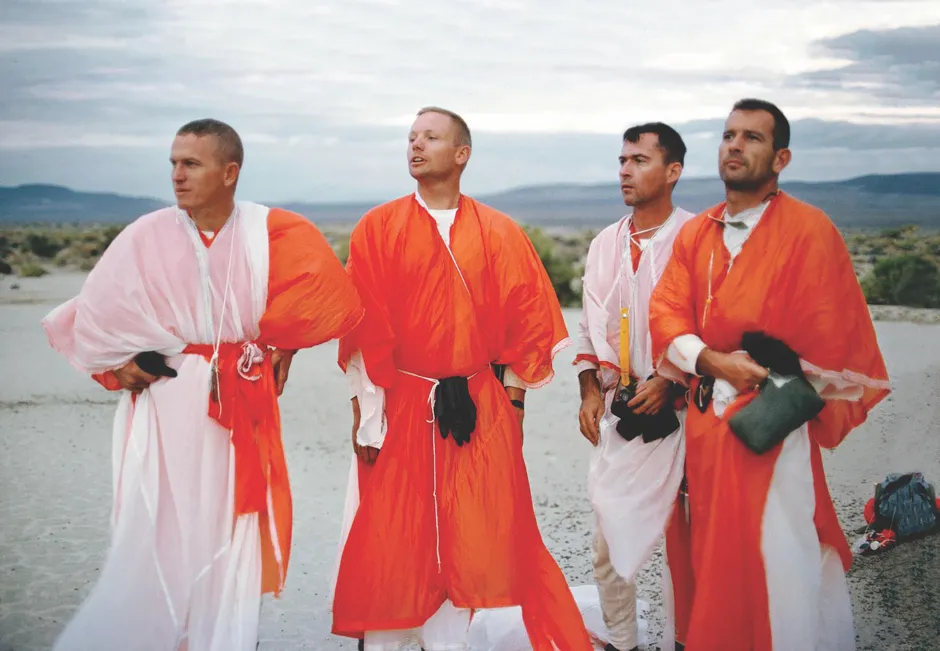
One of the grand ironies of Apollo-era spaceflight was that the astronauts, all expert pilots, returned to Earth in a capsule that fell with little directional control. This meant that, in an emergency or due to some error, it was possible a mission could land a long way from its target spot in the ocean, perhaps even landing in one of the world’s deserts.
To prepare for such an eventuality, astronauts studied desert survival. Though they had some rations in the capsule, they were taught how to survive off the land and use what materials they had to fashion a shelter.
Here, astronauts Frank Borman, Neil Armstrong and John Young, and NASA official (and ex-astronaut) Deke Slayton, demonstrate how to use parachute material to stay cool in the punishing desert heat during a training session in August 1964.
Lunar Landing Research Vehicle - Edwards Air Force Base, California
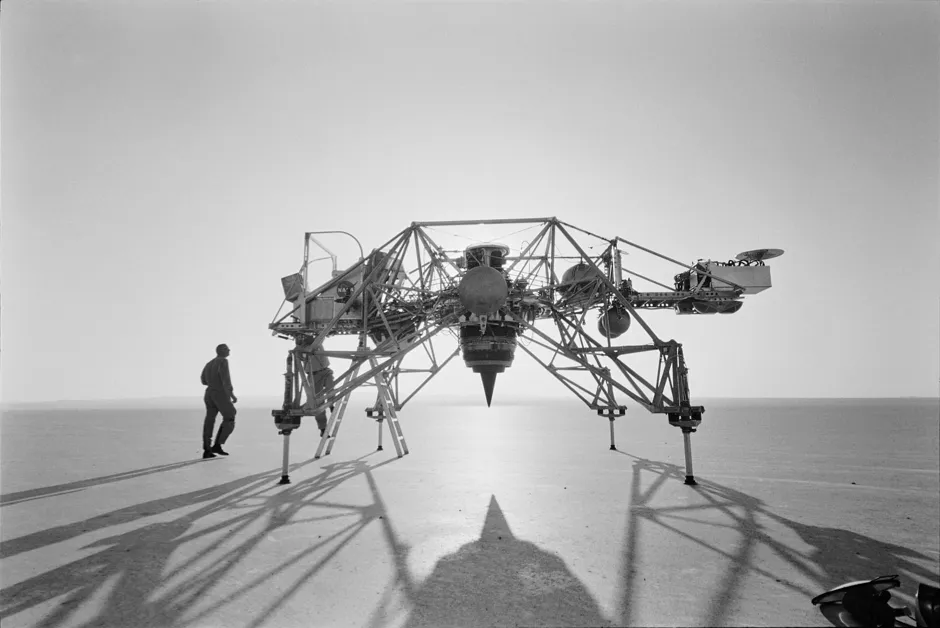
This alien-looking contraption is the Lunar Landing Research Vehicle (LLRV) – a barebones approximation of the Lunar Module that would carry astronauts to the surface of the Moon. Designed to mimic the feel and movement of a vertical lunar landing, the LLRV was little more than a cockpit mounted above a large engine.
Sixteen small thrust rockets provided directional control, while the main engine gave enough thrust to make the pilot feel like he was flying in low gravity. Neil Armstrong is seen here with the LLRV in 1964.
It was an excellent simulator that NASA brought into training early on, but the vehicle was not without its problems. During one test in May 1968, Armstrong ran into difficulties and was forced to eject moments before the LLRV crashed and caught fire. Thankfully, he walked away unscathed. An improved version of the trainer, the Lunar Landing Training Vehicle (LLTV), resumed flight operations not long after.
Read more about the Apollo programme:
- How to argue with a Moon landing denier
- Everything you ever wanted to know about the Apollo programme
- Ladies who launch: the women behind the Apollo Program
Splashdown - Gulf of Mexico
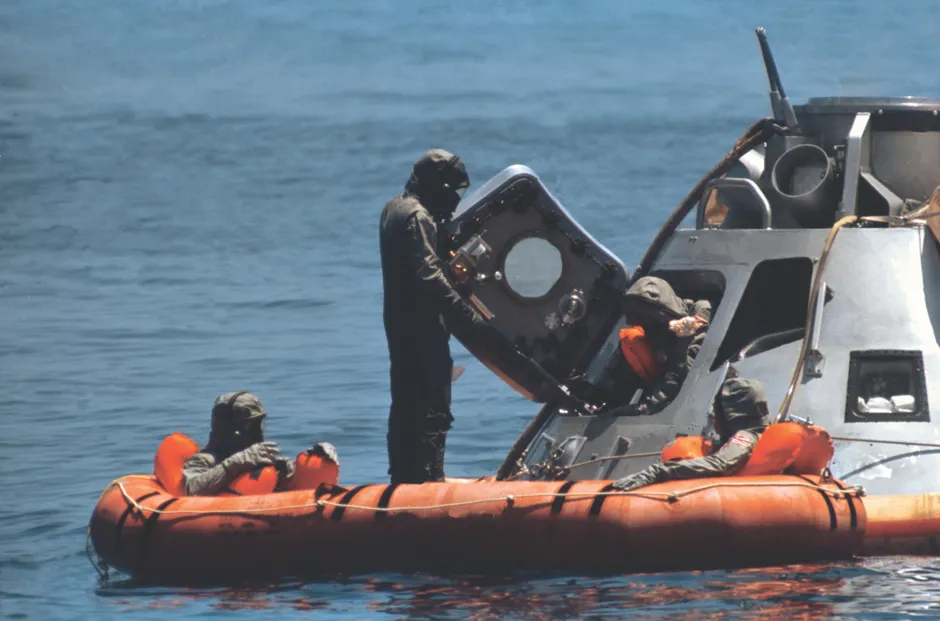
Each Apollo mission ended with a splashdown as the Earth-bound capsule fell by parachute onto the yielding surface of the ocean. This was simply the easiest way to end a spaceflight (and it still is – SpaceX and NASA both plan to use this method for their upcoming Dragon and Orion missions).
This meant astronauts had to learn how to safely exit the waterborne capsule. They needed plenty of practice beforehand, because when it came to the real situation they would have just experienced a harrowing 11-minute drop through the Earth’s atmosphere.
First, the astronauts practised in pools where they could easily swim from the spacecraft. Then they moved into the ocean where waves and weather made things more challenging. Here, the Apollo 11 crew practises exiting a mock-up spacecraft in the Mexican Gulf. Over time, astronauts got used to transferring from the bobbing capsule into the life raft, from where they would be winched into a helicopter and delivered to the safety of an aircraft carrier.
Listen to podcastsabout the Apollo Programme:
- Science Focus Podcast|Why is the Moon landing still relevant 50 years on? – Kevin Fong
- Science Focus Podcast|The mindset behind the Moon landing – Richard Wiseman
- Radio Astronomy Podcast|Talking Apollo moonwalkers with author Andrew Smith
Apollo module simulators - Cape Kennedy (now Cape Canaveral), Florida
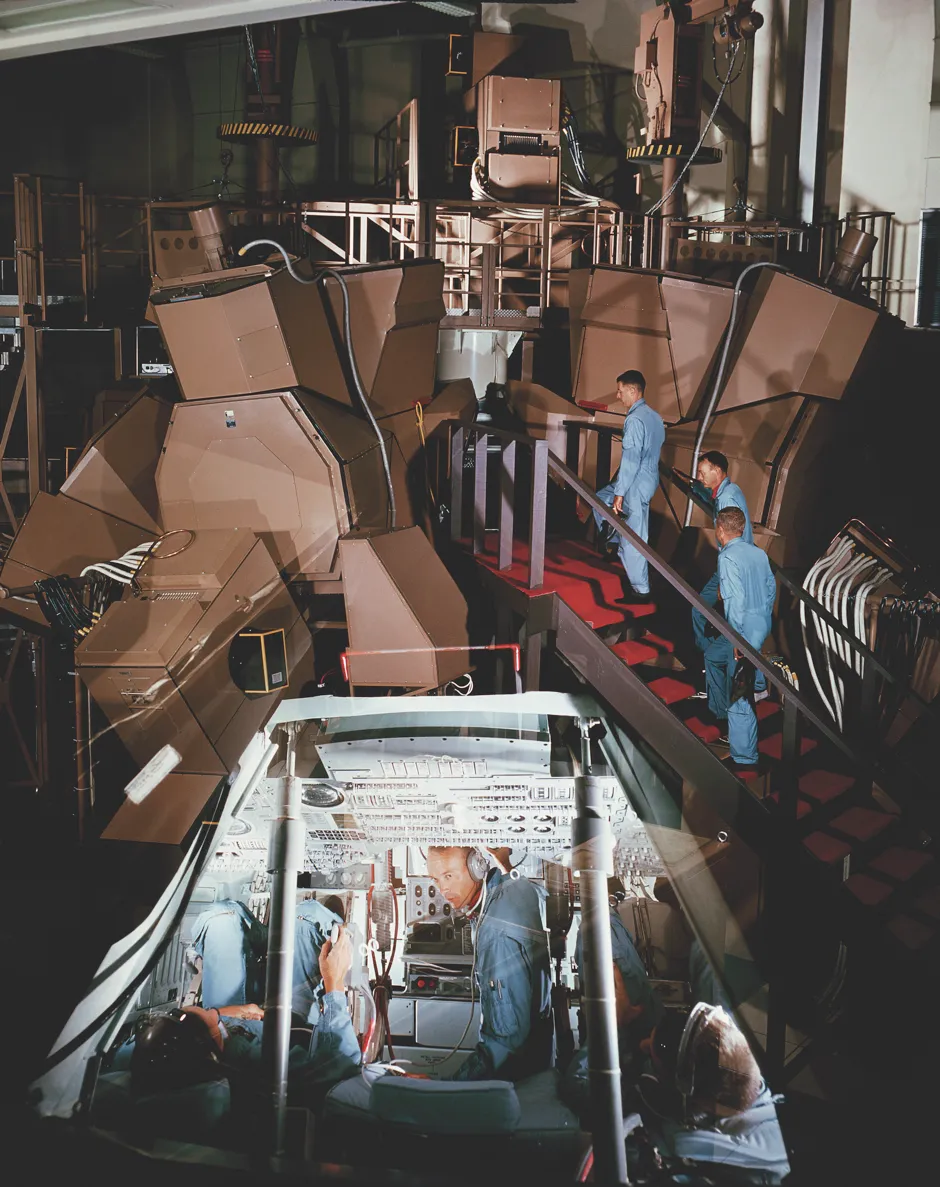
Every Apollo spacecraft – made up of the Command and Service Module and the Lunar Module – flew for the first time on its lunar mission. This meant that the Apollo 11 crew had limited time to train in the actual modules, and so did most of their pre-flight work in sophisticated simulators such as the one shown in this montage.
These specialised trainers were designed to mimic actual flight conditions as closely as possible. For example, when an astronaut fired a thruster engine, the readouts in the simulator responded accordingly, video-based visuals in the windows reflected the movement of the spacecraft in space, and hydraulic lifts simulated the physical motion of the craft.
There were multiple simulators at the principle NASA centres where astronauts trained. The challenge for the engineers was to update the simulators as tweaks were made to the real-life modules. But they succeeded, amply preparing Apollocrews for their lunar missions.
- This feature was first published in the Summer 2019 issue of BBC Science Focus–subscribe here.
Follow Science Focus onTwitter,Facebook, Instagramand Flipboard
